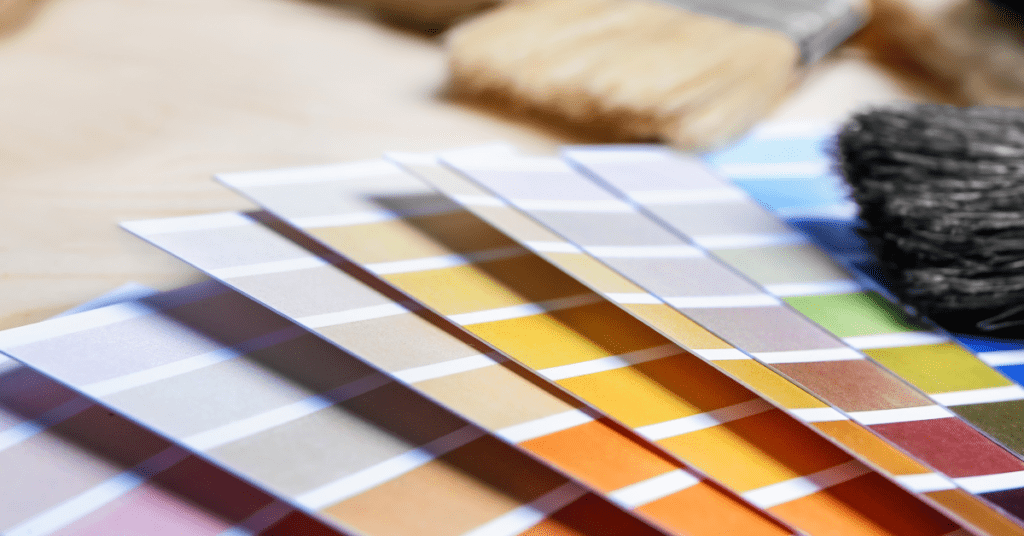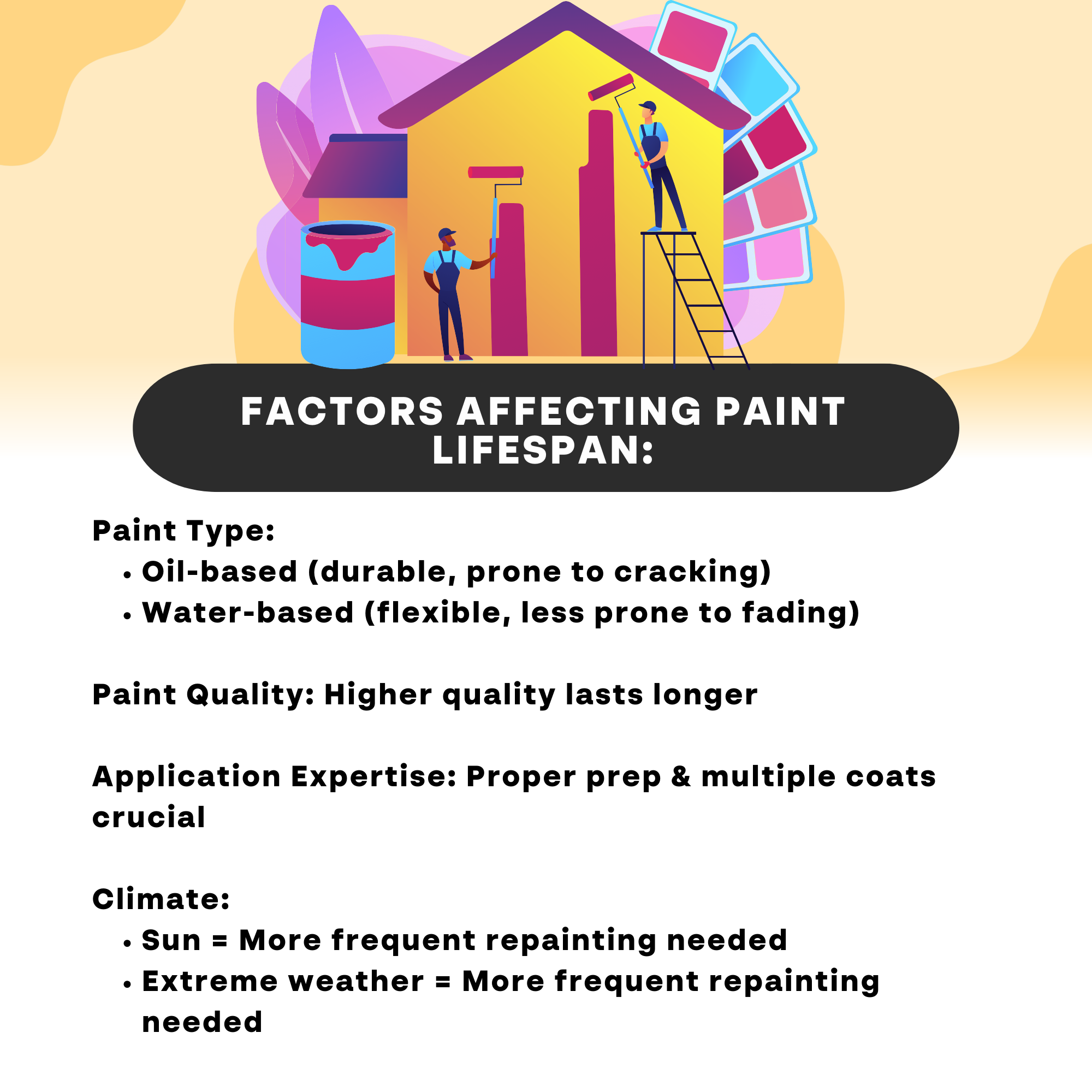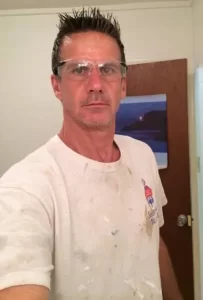How many years should exterior house paint last?
Exterior house paint is a crucial investment that enhances the aesthetic appeal and protects the structure from the elements. But how long should it last? Let’s dive into the factors that influence the life span of exterior paint and when to consider giving your home a fresh coat.
Exterior house paint is like the cherry on top of a sundae – it adds the final touch of beauty to your home’s facade. But unlike a cherry, paint doesn’t last forever. Over time, it can fade, chip, and wear away, leaving your home looking drab and vulnerable to the elements.
So, how long should exterior house paint last? The answer depends on several factors, including the type of paint, the quality of its application, and the climate in which you live. Generally, you can expect your exterior paint to hold up for five to ten years, but some paints can last even longer if they have the right ingredients.
The Type of Paint Matters
The first factor that affects the longevity of exterior paint is its type. There are two primary categories of paint based on their base – oil-based and water-based (latex).
- Oil-based paints have been around for centuries and have been the go-to choice for exterior surfaces for a long time. They are known for their durability and ability to create a smooth, hard finish. However, they can also become brittle over time, which makes them prone to cracking and peeling.
- Water-based paints, also known as latex paints, have become popular because they are flexible and allow air to pass through. There is little to no risk of cracking since they can expand depending on the temperature. Moreover, they are also less prone to fading and yellowing when exposed to sunlight.
When to repaint house exterior:
- If you have oil-based paint, you may need to repaint your house exterior every five to seven years.
- If you have water-based paint, you may need to repaint your house exterior every seven to ten years.
Quality is Key
While the type of paint sets the foundation for longevity, the quality of the paint and its application are like the icing on the cake. High-quality paint contains more pigments and binders, making it more resistant to fading and wear.
Investing in premium paint may cost you more upfront, but it can save you money in the long run as you won’t have to repaint as frequently. Additionally, the expertise of the painter matters as well. Even if you have the best paint, its lifespan will be protected if it needs to be appropriately applied – with thorough surface preparation, multiple coats, and attention to detail.
When to repaint house exterior:
- If you used high-quality paint and had it professionally applied, you can wait for 10 to 15 years before repainting your house exterior.
Climate Can Make a Difference
Your house’s location and the climate you experience are also significant factors in determining how long exterior paint will last.
- Direct sunlight can speed up paint fading and deterioration.
- Similarly, your paint will face additional challenges if you live in an area that sees its fair share of extreme weather – heavy rain, snow, or salty sea air. Moisture can seep into the paint film, causing it to blister and peel, while salt can accelerate paint deterioration.
When to repaint house exterior:
- If your house is in a sunny location, you may need to repaint your house exterior every five to seven years.
- If your house is in an area prone to extreme weather, you may need to repaint your house exterior every four to six years.
Maintenance Extends the Lifespan
On the flip side, if you neglect your paint and let problems such as peeling or moisture damage linger, leaving your home’s exterior naked and vulnerable, the paint will only last for a while. You’ll find yourself reaching for the paintbrush sooner than expected.
Signs Your Paint Needs Refreshing
- Visual Cues: Look for faded paint, chipping, peeling, chalking (a powdery residue when rubbed), blistering (bubbles under the paint surface), and cracking (especially around openings or moving parts).
Performance Issues:
- Failing paint can lead to moisture intrusion through cracks and gaps in the paint film. Moisture can cause mold growth, leading to health risks and structural damage if ignored.
- Chipped or peeling paint exposes the underlying material (wood, siding, etc.) to the elements. As time goes by, the wood in your home may be exposed to moisture, which can cause it to decay and weaken. This can lead to costly repairs that you’ll want to avoid. By preventing exposure to moisture, you can keep your home’s wood in good condition and save money in the long run.
Choosing the Right Paint
- Beyond Oil vs. Latex: Acrylic latex paints offer a good balance between affordability and performance compared to oil and latex paints. They are durable, flexible, and mildew-resistant, making them popular in many climates.
- Consider silicone-acrylic blend paints for harsh climates or areas with heavy rain or snowfall. These premium paints offer superior elasticity and resistance to cracking, making them ideal for areas with extreme temperature fluctuations.
DIY vs. Professional Painting
- Weighing the Options: A DIY exterior painting project requires skills, tools, and safety precautions. Proper ventilation is essential, as is using fall protection equipment for working at heights. You’ll also need to handle paint products safely.
- Professional painters bring extensive experience to the table. They excel in surface preparation, applying paint correctly using multiple coats, and problem-solving unforeseen issues. Additionally, they are insured in case of accidents.
Preparing Your Home for Painting
Proper preparation is critical to a long-lasting paint job, whether you choose DIY or professional painting.
- Safety First: Clear walkways, cover landscaping, and turn off utilities near the painting area.
- Surface Prep is Crucial: To give your exterior a fresh look, use a gentle detergent to clean away dirt and cobwebs. And remember to remove any chipping paint for a polished finish! A heat gun (used with proper safety precautions!) can be helpful for stubborn areas. Finally, fill cracks and holes with a suitable exterior caulk to prevent moisture infiltration and ensure a smooth finish.
Maintaining Your Paint Job
- Regular cleaning with a mild soap solution once or twice yearly removes dirt and dust buildup, helping your paint job last longer.
- Trim overgrown plants to prevent scratches on painted surfaces.
- Promptly address minor paint issues like small chips or peeling to prevent them from becoming more significant problems.
The Bottom Line
A healthy exterior paint job is vital for your home’s curb appeal and protection. By investing in top-notch paint and ensuring it’s applied correctly, you can extend the life of your paint job, save money down the line, and enjoy a beautiful, long-lasting finish.
Are you prepared to rejuvenate the exterior of your home?
Jeff Schultz Painting can help! Jeff Schultz is a one-person powerhouse, offering unparalleled expertise and dedication to every project. His unique approach ensures that every client receives personalized, top-quality service. Contact us today for a free painting estimate and discuss your project!
Ensure your home is noticed – underline Sarasota exterior painting and give us a call today!










